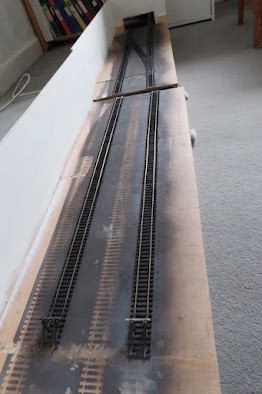I read Phil's post from a couple of days ago (link to your right) with interest. The general argument is that there is a demand for perfect RTR coupled with a shift toward add-ons being produced via the medium of CAD and 3D printing. I have to disagree, well up to point anyway, and I don't think that traditional modelling is doomed – far from it.Whitemetal lumps
When I started, the overriding material used for rolling stock kits, plus a lot of other stuff was whitemetal. Easy to work and cheap and simple to cast in a cottage industry workshop. Then during the 1980s this fell from favour with the advent of etched brass which was jumped on with glee with the finescale boys as the way forward, often with a religious fervour not to mention a slightly down the nose attitude. The smart money (and I'm thinking Roger Chivers and London Road Models) took the best from w/m and brass or nickel silver using the properties for each and used the weight of the whitemetal and the delicate nature of the sheet material to improve the breed. The traditional makers such as SE Finecast had to play catch up. To an extent we are at this juncture again.
The desire for RTR perfection is really a separate subject and is not really any different from any other consumer product such as TVs, that is, constantly evolving due to consumer demand. Actual modelling is another thing. It's a pastime.
Quality
The model railway 3D print products are in essence no different from the whitemetal products of yore. We all know there is some excellent stuff out there... and there is a lot of absolute crap produced by well-meaning but unskilled amateurs. When building Unnycoome a decade ago we struggled to find decent, proper 2mm castings amongst all the mis-labeled and badly made whitemetal items that were passed off as top quality and scale. My point here is that 3D printing is just a new way to make crap parts and in 20 years time people will be rummaging around on club stands picking out secondhand 3D parts that failed the quality test. The good will stand the test of time. This is positive and not the end of the world. Glossing over the environmental aspect, the parts are plastic and not nasty lead-based things.
The fire pit
Phil's point about not being able to compete is not new. I've being saying for 20 years plus that I can't reach the standard of the RTR stuff, and to be honest this has probably been the case since the Palitoy ranges of the early 1980s... So what? This may be more to do with Phil living in 'the bubble' and mixing with top talents, not to mention the fire-pit of criticism that is RMweb with everyone ripping every new product to bits and demanding more and more detail, but t's not the real world and not where the vast majority of modellers live.
A positive future
What are the positives? Well I'll give an example. Two good friends of mine have recently collaborated lightly on a project to scratch build an O gauge Q1 in cardboard (yes you read that right) and the result is fantastic, standing up to any etched brass kit. The collaboration occurred with the Boxpok wheels that the Q1 ran on. 3D print overlays were drawn and made ensuring a fine and consistent finish which which saved time. As far as I can see, the modellers will model and the buyers will buy and the 3D print will just gradually replace the lost wax castings and misshapen whitemetal blobs. The only real difference is the screen design which is a lot less dangerous than ladling molten metal around.




